The next time you make a smoked beef brisket, save the trimmed fat scraps to make beef tallow! You can also use other beef suet. Beef tallow is not just excellent for deep frying and adding a ton of flavor to your dishes, but this liquid gold has many other uses too!
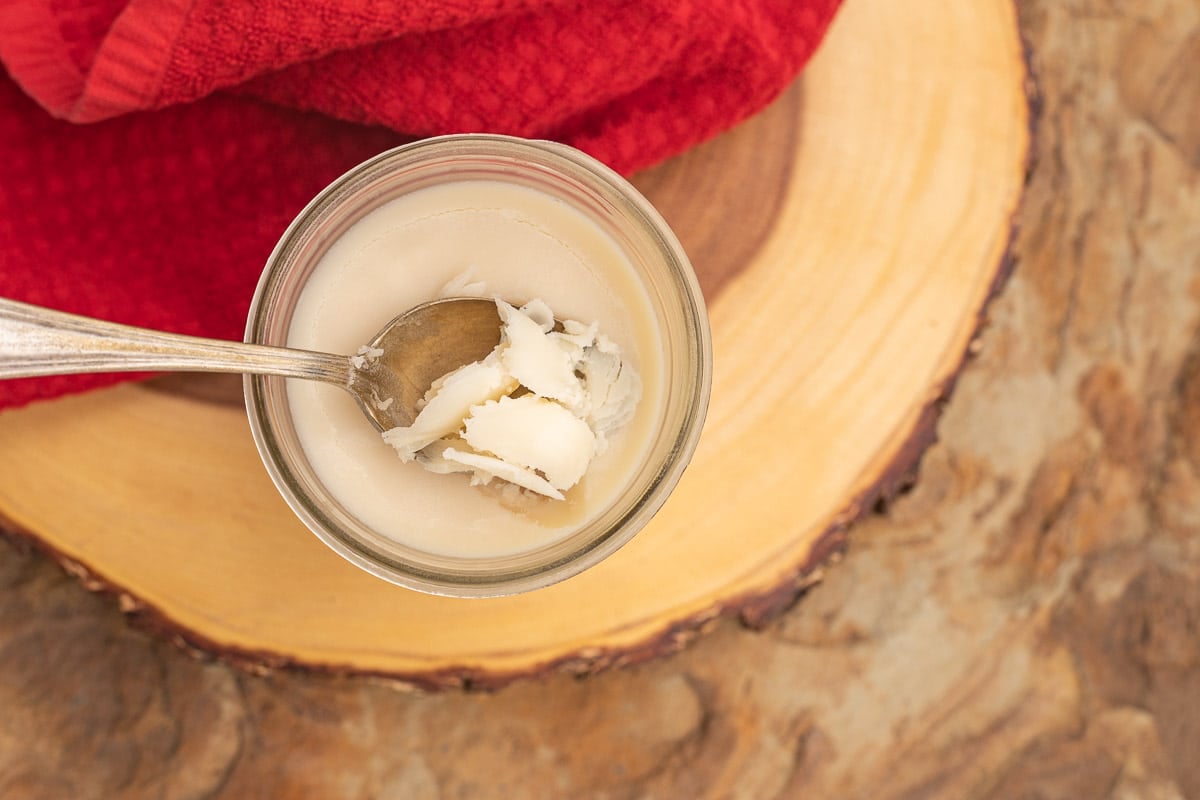
Tallow is fat rendered from beef or mutton, but beef tallow is the most common of the two. This natural animal fat can be used in cooking, but it has many other uses as well. For example, it can be used as a lubricant and as a main ingredient in balms, lotions, soaps, and candles!
To make tallow, fat is rendered over low heat for anywhere from 1 to 3 hours, then strained to make a beautiful, golden oil that you can cook with or lubricate your rifle, you decide!
I have tossed a lot of fat trimmings from the many briskets and tri-tips I've smoked over the years. Then one day it finally dawned on me that I could render the fat and use it to cook with instead of buying expensive cooking oils, duh!
After all, Mom did the same with beef and lamb fat trimmings. Once she rendered the fat, she took it a step further. Instead of tossing the crispy pieces of fat, she salted them and handed them out to us kids, who waited excitedly to devour them. We even have a name for these sinful treats. In Assyrian, they are called "kazikeh". Come to think of it, they can make a great Keto snack!
Jump to:
😍 Why You'll Love This Recipe
- Making beef tallow is a great way to make use of every part of the brisket or other fatty cut of beef!
- Most oil prices, including vegetable oil and olive oil, have gone through the roof. Making tallow can save you money in the long run.
- Experts are now suggesting that consuming grass-fed beef tallow is actually better for you than consuming highly processed oils such as canola oil, soybean oil, corn oil, and margarine.
- This versatile animal fat has many uses beyond cooking!
- Tallow has a long shelf-life that can be extended even further when stored in the fridge or freezer.

🔖 Ingredients & Substitutions
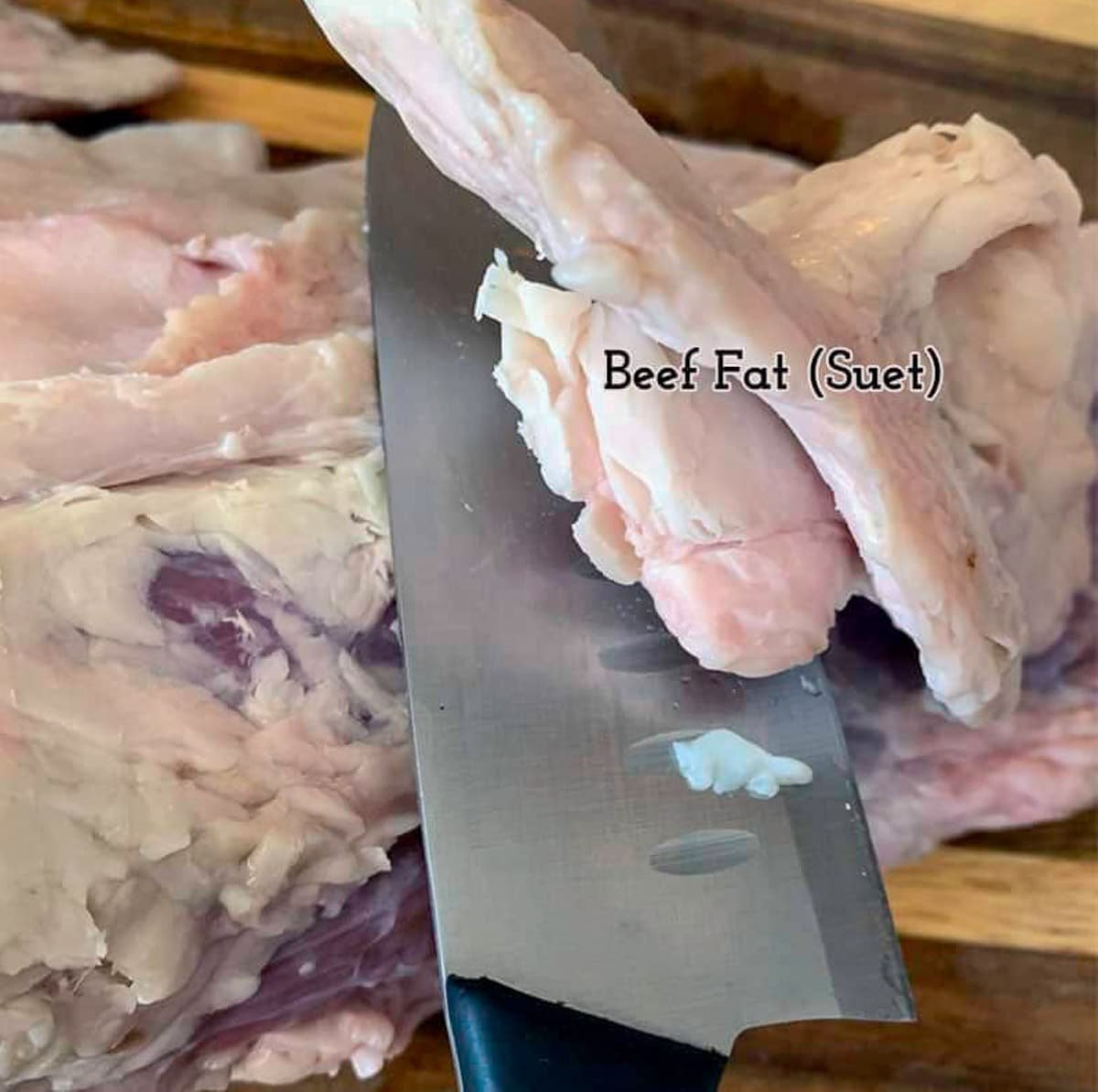
All you need to make this recipe is beef suet. So the next time you prepare a brisket or an oven-roasted tri-tip, don't toss the trimmed fat, make beef tallow with it instead!
🔪 Helpful Tools
🍖 How To Make This Recipe
Step 1: Defrost beef suet, if frozen, then chop into 1 to 2-inch pieces. Add fat trimmings to a medium-sized pot, cover, and cook over very low heat until the fat is rendered and the fat pieces shrink and become crispy. The total cook time can take anywhere from 1 to 3 hours, depending on how low your heat setting is.
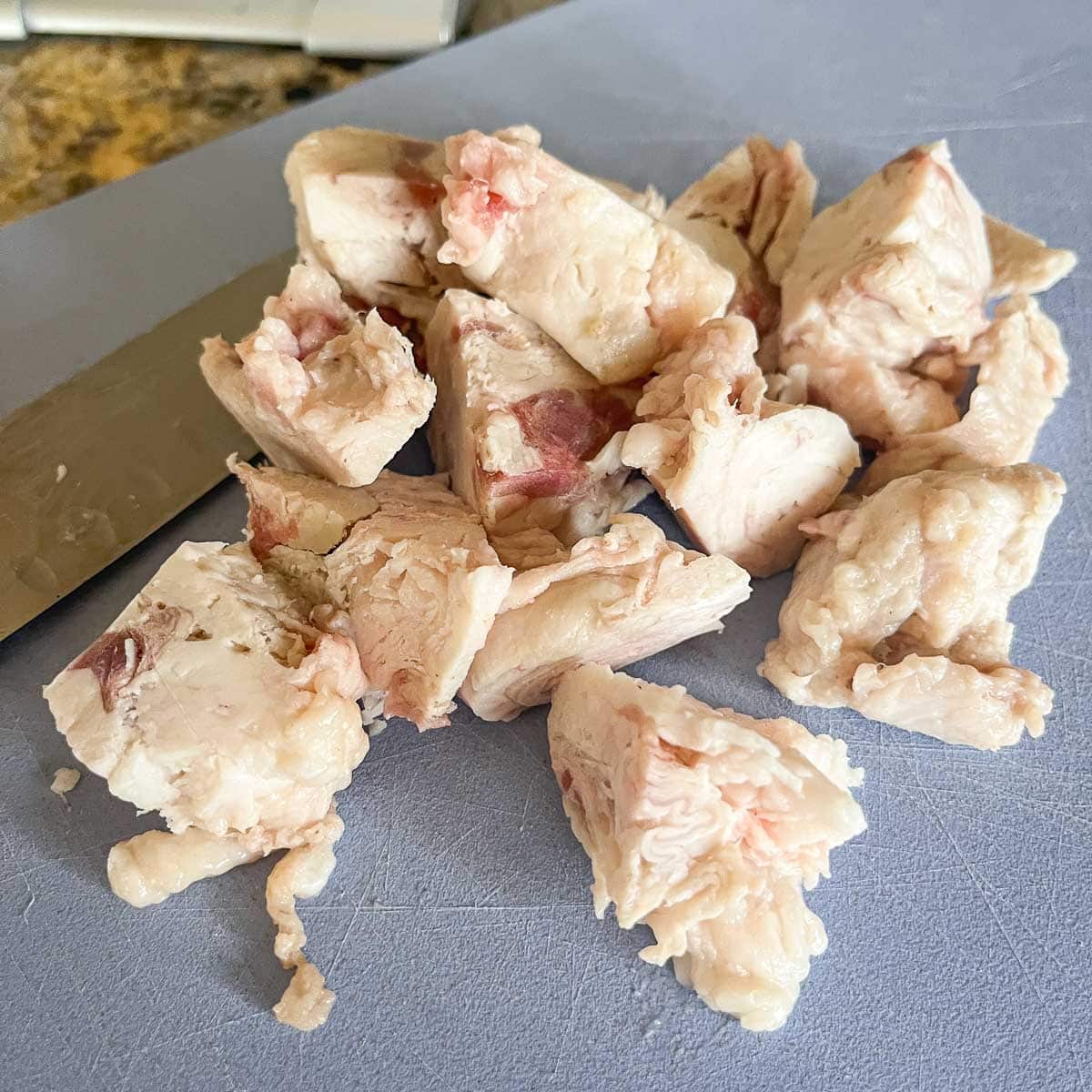
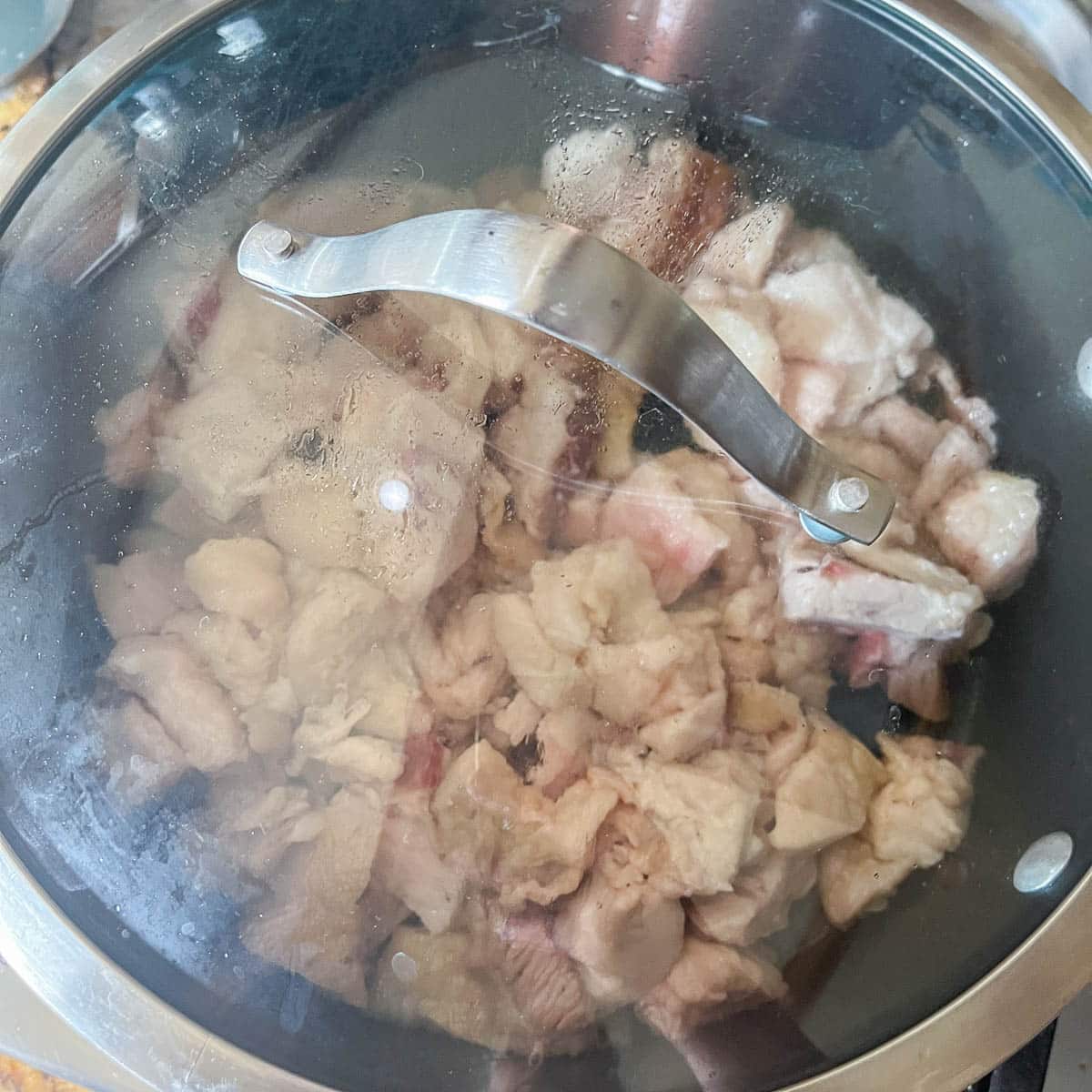
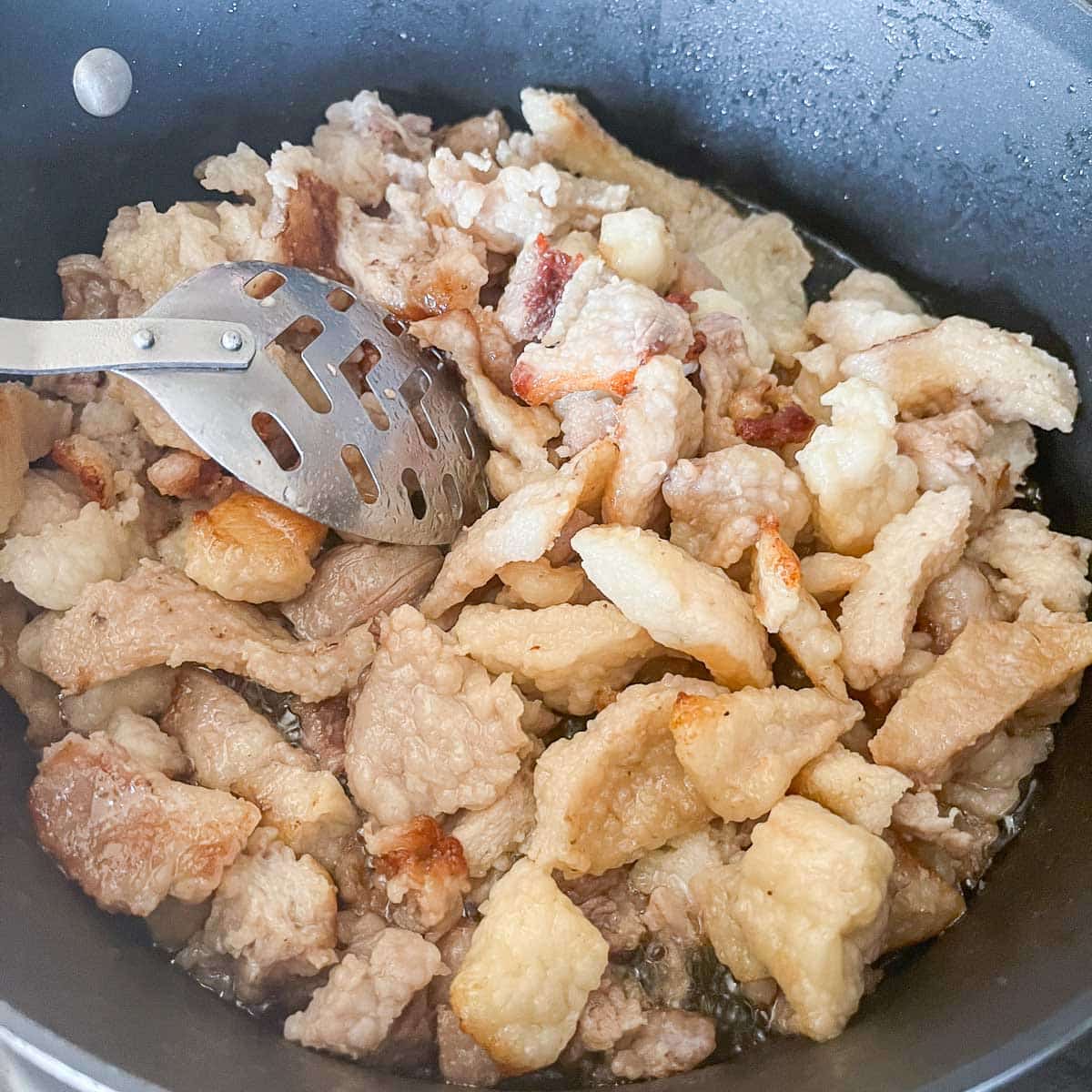
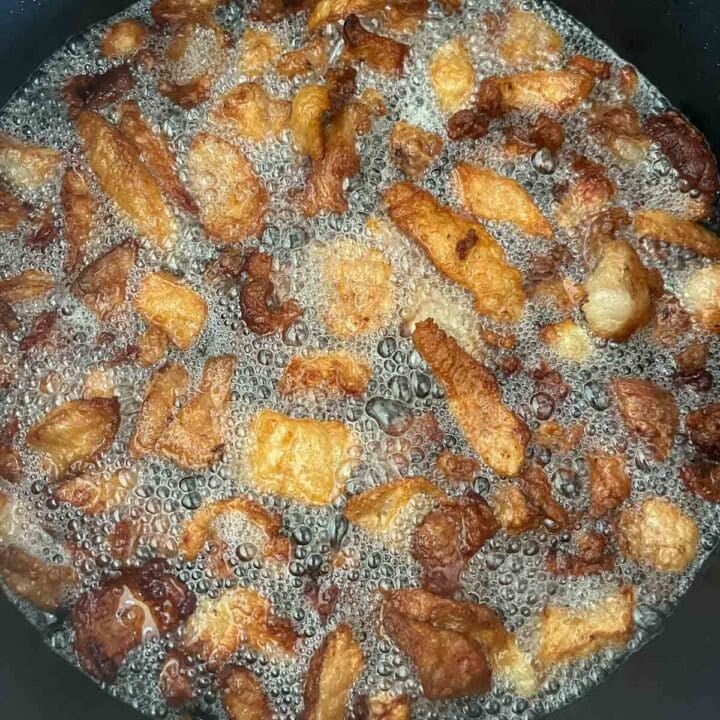
Pro Tip: I only rendered mine for 1 hour, but it could have gone longer.
Step 2: Use a slotted spoon to remove crispy fat pieces and discard. Use a fine mesh strainer to strain the tallow into a measuring cup.
Would you like to save this recipe?
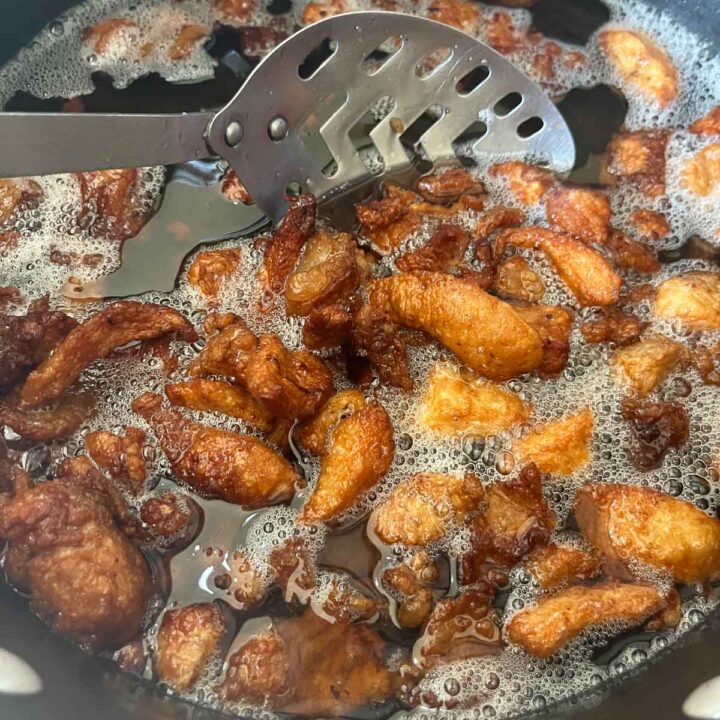
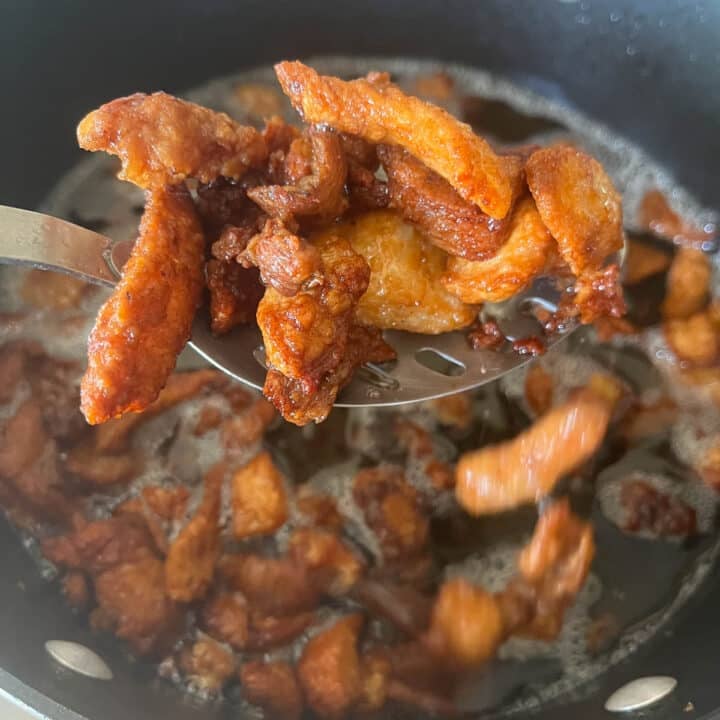
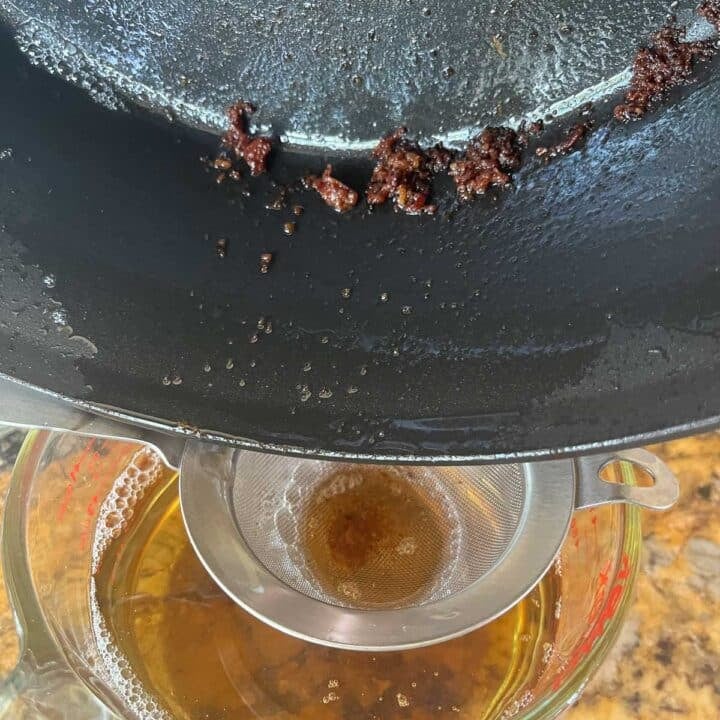
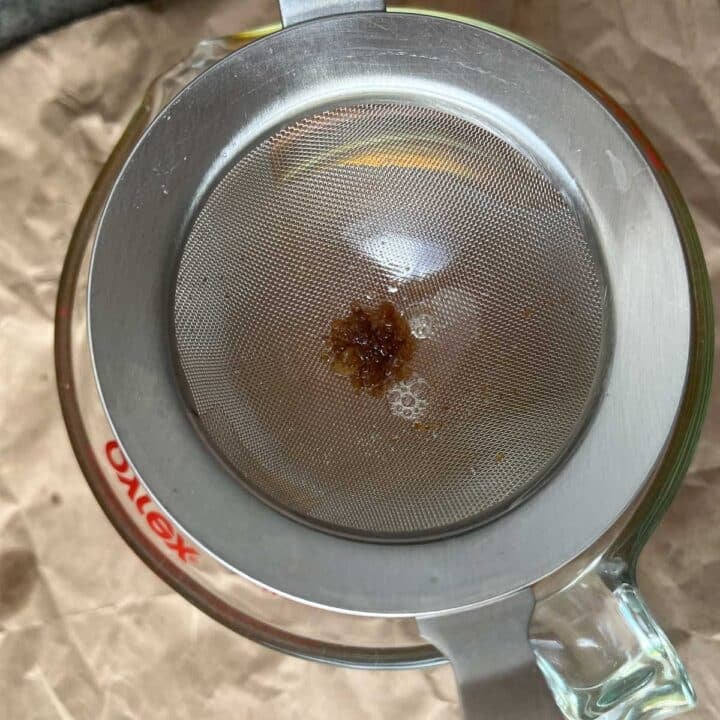
Pro Tip: I like straining the tallow into a measuring cup so I know how much tallow is rendered and what size jars I need to store the tallow.
Step 3: Pour the tallow into mason jars and allow to cool completely before adding the lids. Hand-tighten lids and store them on the counter or in the pantry. Tallow can also be stored in the refrigerator or the freezer.
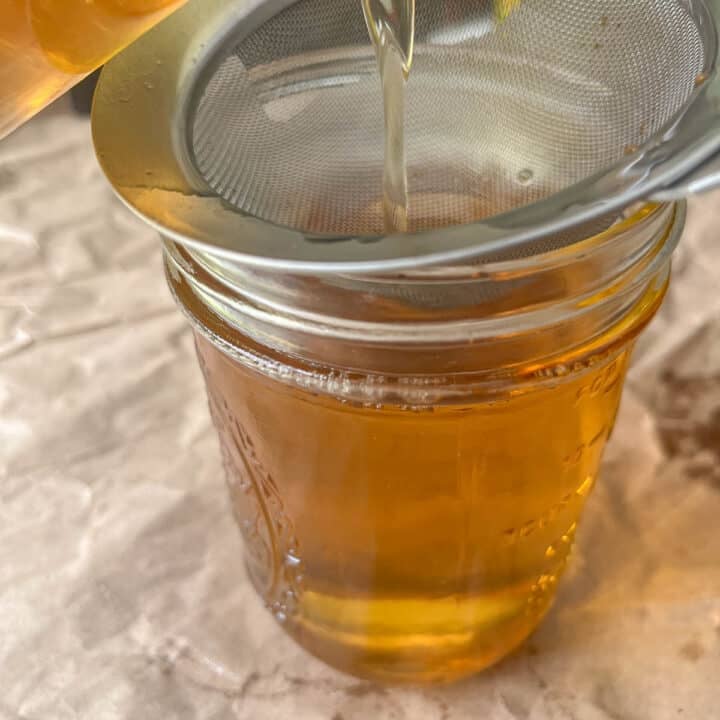
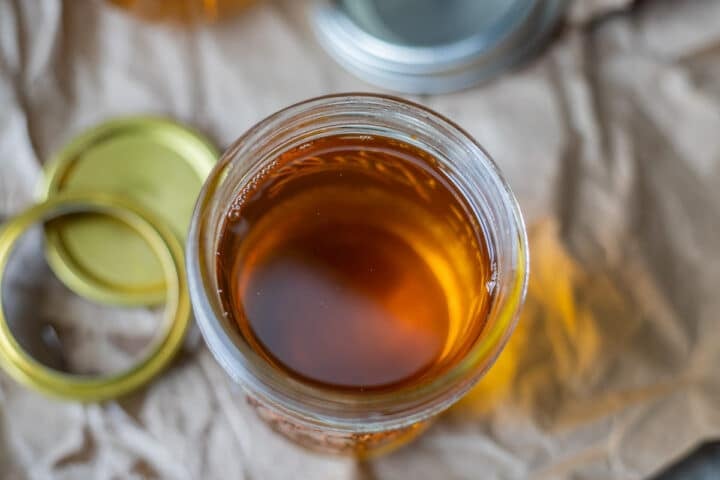
Pro Tip: You can strain the oil through a cheesecloth, paper towel, or a coffee filter if you don't have a fine mesh strainer.
🧈 How to Make Lard
Making lard from scratch is just as easy as making beef tallow. All you have to do is slice the pork fat into 1" to 2" pieces and cook it over very low heat until the fat is completely rendered and all that remains are crispy brown pieces of fat. Discard the fat pieces, strain pork fat through a fine mesh sieve, then pour into a mason jar. Need even more tips? Check out my how to render pork fat recipe!
What Readers Are Saying
Very easy to follow directions. I had just shy of 2 pounds of trimmings from a 12.9-pound brisket. I've got 2 full 8-ounce jars and one that'll be maybe ¾ full when the last bits pass through the coffee filter rig. I used a potato masher to press the fried bits and got an appreciable amount more. -Wayne
🍗 What Can You Do With Tallow?
Tallow has many different uses, and some just might surprise you! For example, tallow is used to make candles, soaps, and even salves!
It has a high smoke point, which means it's excellent for making fried chicken and seasoning cast-iron skillets. Some people even use it in baking!
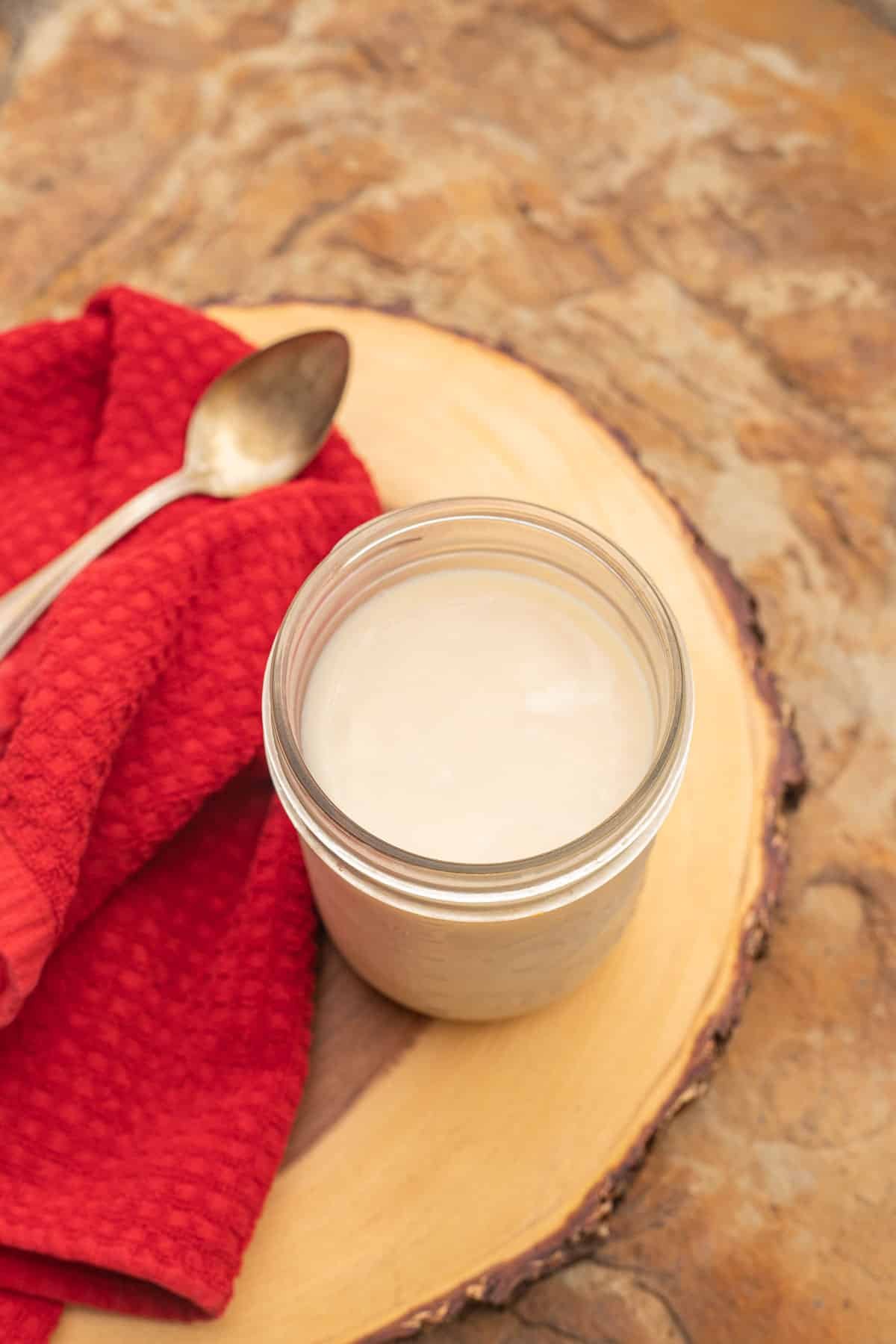
🤷🏻♀️ Recipe FAQs
Although any beef suet can be used to make tallow, it is said that the "leaf fat" found around a cow's kidneys makes the mildest-tasting and clearest tallow.
Tallow and lard are two different things. Tallow is made with rendered beef fat, while lard is made with rendered pork fat.
Beef tallow will last 2 months when stored at room temperature in a mason jar. When refrigerated, it is good for up to a year. Freezing tallow makes it last indefinitely!
👩🏼🍳 Pro Tips
- When rendering tallow, keep the temperature as low as possible. You want to avoid burning the tallow, which will affect both the taste and color.
- Store in the fridge or freeze it for even longer storage!
- Use it with French fries, eggs, and in place of butter or oil in recipes. It can also be used to season your cast iron skillets!
- If you have a local butcher, see if you can get beef suet for free or for a minimal price.
- Choose grass-fed cow fat whenever possible.
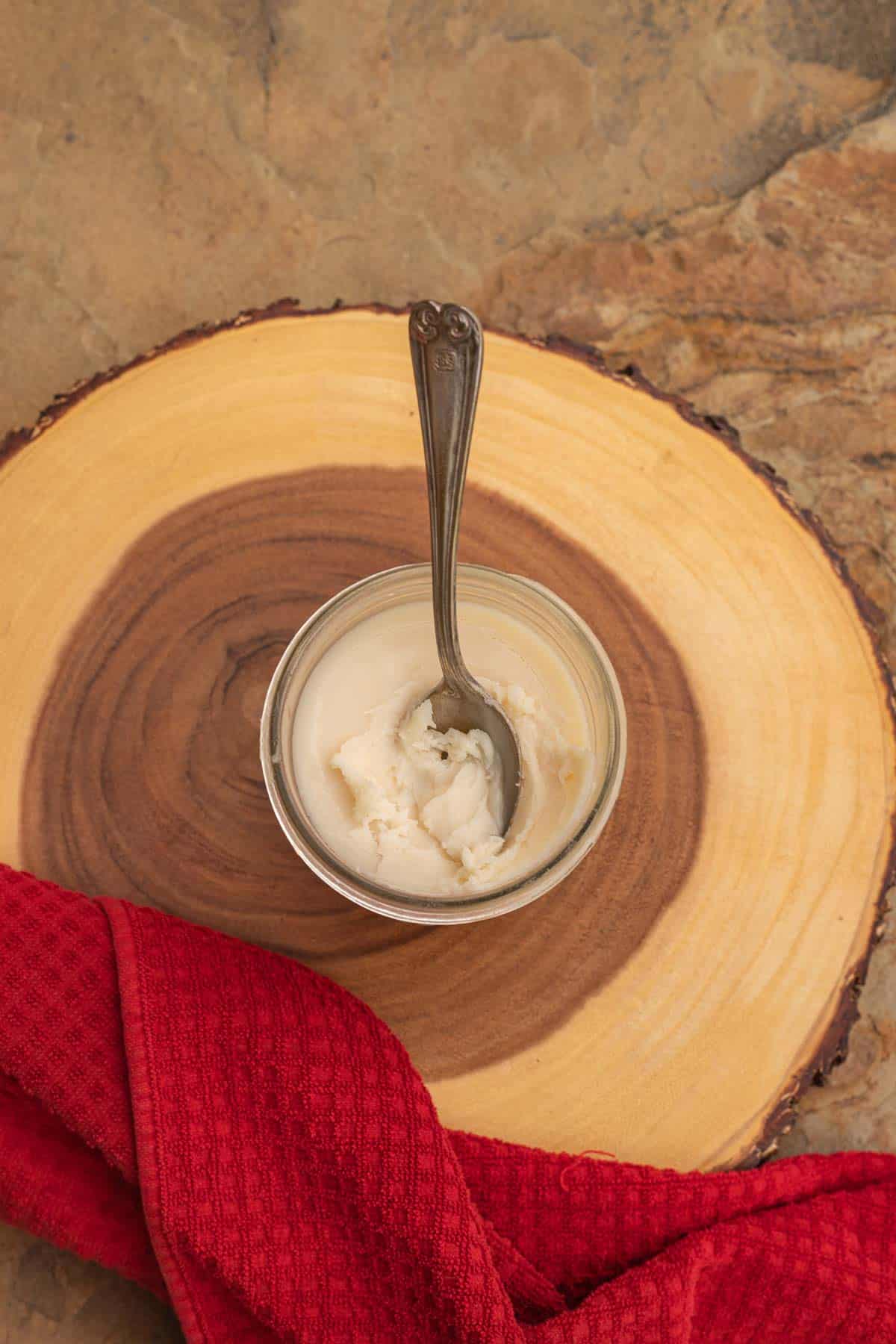
🫙 More Food-Related Articles
Did You Make This Recipe?
Love this recipe? Please leave a 5-star 🌟🌟🌟🌟🌟rating in the recipe card below & a review in the comments section further down the page.
Stay in touch with me through social media @ Instagram, Pinterest, TikTok, and Facebook. Don't forget to tag me when you try one of my recipes!
📖 Recipe
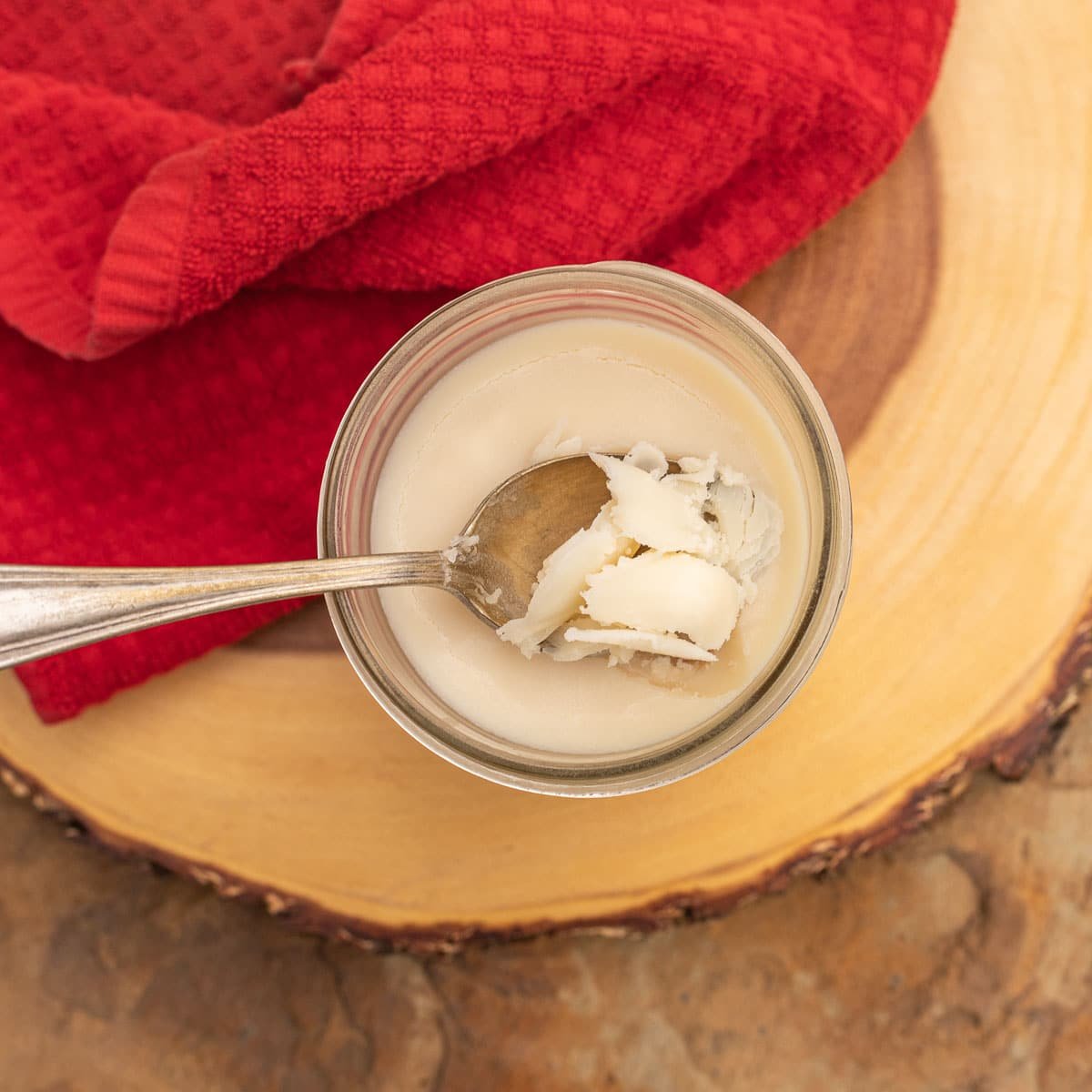
How To Make Beef Tallow
Ingredients
Equipment
Method
- Defrost beef suet, if frozen, then chop into 1 to 2 inch pieces. Add fat trimmings to a medium-sized pot, cover, and cook over very low heat until the fat is rendered and the fat pieces shrink and become crispy. The total cook time can take anywhere from 1 to 3 hours depending on how low your heat setting is.
- Use a slotted spoon to remove crispy fat pieces and discard. Use a fine mesh strainer to strain the tallow into a measuring cup.
- Pour the tallow into mason jars and allow to cool completely before adding the lids. Hand tighten the lids and store at on the counter or in the pantry. Tallow can also be stored in the refrigerator or the freezer.
Nutrition
Notes
- I like straining the tallow into a measuring cup so I know how much tallow is rendered and what size jars I need to store the tallow.
- You can strain the tallow through cheesecloth, a paper towel, or a coffee filter if you don't have a fine mesh strainer.
- When rendering tallow, keep the temperature as low as possible. You want to avoid burning the tallow which will not only affect the taste but also the color.
- Store tallow in the fridge or freeze it for even longer storage!
- Use tallow to fry french fries and eggs, in place of butter or oil in recipes. It can also be used to season your cast iron skillets!
- If you have a local butcher, see if you can get beef suet for free or at a minimal price.
- Choose grass-fed beef fat whenever possible.

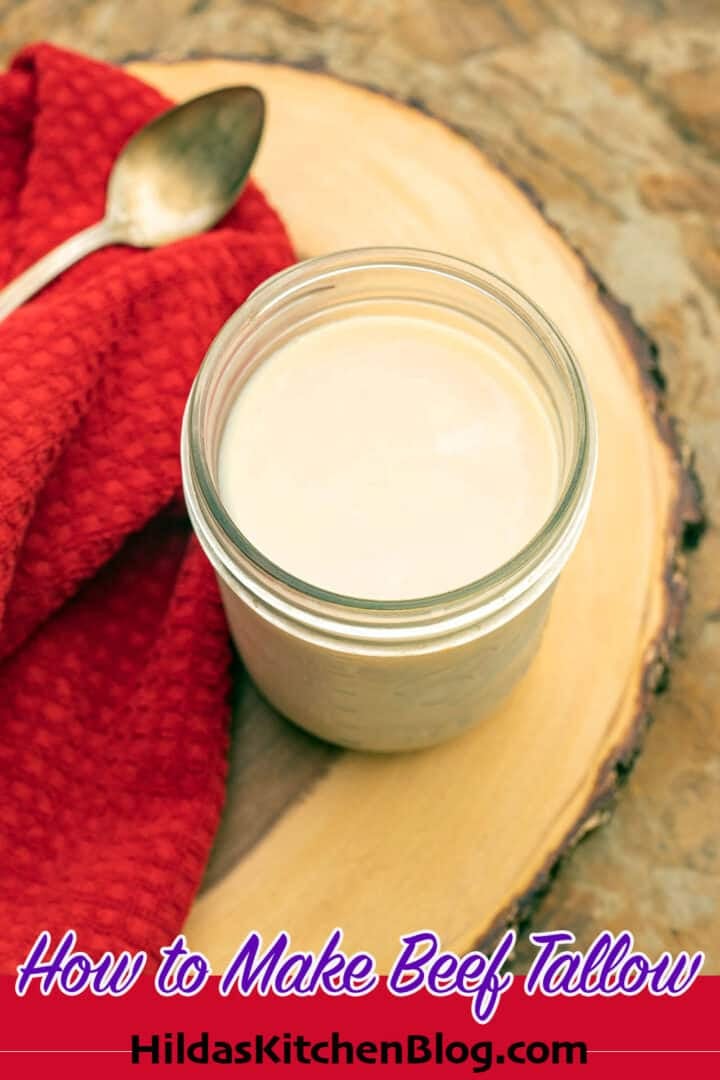

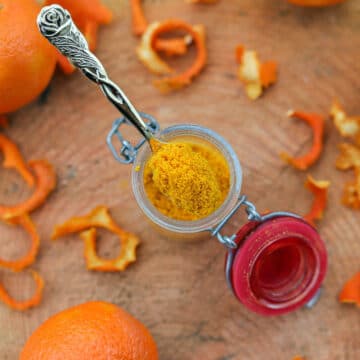

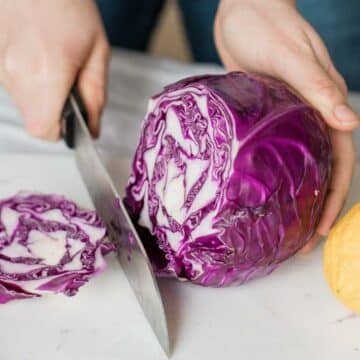
Terry says
I am starting to start making tallow moisturizing can I also use beef suet or beef fat which one is the better pick
Hilda Sterner says
Hi Terry, I have never personally made a moisturizer with tallow. I mainly use it for cooking. However I learned from a quick search online that suet is the best option to use in beauty products. I hope that helps!
Cari says
Thanks for this great recipe with detailed photos. Because I have felt so intimidated to start cooking the suet I bought. It’s just been sitting in my freezer. Now I feel brave enough to start. Thanks again.
Hilda Sterner says
Thank you, Cari! Appreciate the review.
Kristen says
Hello! Wondering if you’ve ever had the issue of your tallow not get solid?? We are using grass fed grass finished beef fat and it won’t get hard at room temp. Or it takes 3 days in the fridge to finally get semi hard but will start to melt once out. We have made some successfully before but perhaps it’s the type of fat that we are given? We ask for all the fat from the cow we get and this is from a different cow than the first successful batches.
Hilda Sterner says
Hi Kristen, It could be the fat you used or didn't render all the water out. Did you cook it low and slow?
Todd says
Thank you for the great instructions!!! Am making some for the first time as I write.
Hilda Sterner says
Thank you, Todd, good luck!
Wayne W says
Very easy to follow directions. I had just shy of 2 pounds of trimmings from a 12.9 pound brisket. I’ve got 2 full 8 ounce jars and one that’ll be maybe 3/4 full when the last bits pass through the coffee filter rig. I used a potato masher to press the fried bits and got an appreciable amount more.
Hilda Sterner says
Hi Wayne, Thanks for the review and the tip! Happy Thanksgiving!
Chris says
I’ve been wanting to do this but what is your “low temp” exactly? Also, the recipe says 2 1/2 beef fat. Cups? Pounds?
I enjoy your blog and have made many good dishes from your recipes. Thanks
Hilda Sterner says
Hi Chris,
Thanks for the comment and for catching my omission. It's actually 2.5 lbs of beef fat, but you can make it with what ever quantity you have. As for the heat setting, you just want to make sure the heat is as low as possible. You don't want to burn the fat but instead render it slowly.